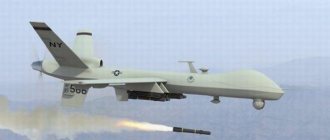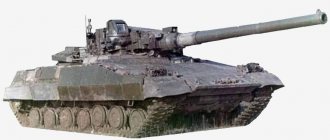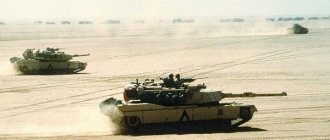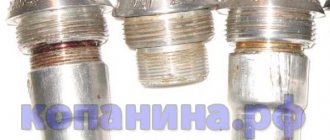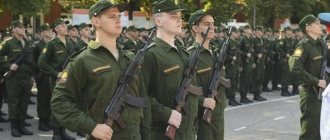Home » Tanks of the present and future » What will the M1A3 Abrams II be like and will it be able to compete with our Armata
Tanks of the present and future
boroda 10/17/2019 5608
10
in Favoritesin Favoritesfrom Favorites 4
According to the plans of the American military, serial production of the new American tank should begin as early as 2032, and the first experimental vehicles can be evaluated in 2023-25. Based on the stated characteristics of this vehicle, it is already clear that it will not be, like the Armata, a 4th generation tank. The future Abrams II, at best, can be considered a 3+ generation tank, although the vehicle’s characteristics should be impressive and not inferior to those of the Armata.
What characteristics do the Americans plan to achieve for their vehicle and compare them with the characteristics of the T-14 Armata ?
Power point
So, our tank is equipped with a 1350 hp engine, which, with a weight of 50 tons, gives it a specific power of 27 hp/ton. But according to representatives of “Uralvagon, without any special modifications, it is possible to boost it to 1500 hp, which will provide a specific power of 30 hp/ton. What kind of power plant are our overseas competitors planning for their car?
The M1A3 will be powered by a new gas turbine engine, which will be the most powerful tank engine. It will have an electronic limiter that will limit its power to 1800 hp, this is done for efficiency in terms of fuel consumption and to increase engine life. But if necessary, the restriction can be lifted and the engine will develop power in the region of 2000 hp. The weight of the tank will be around 65 tons, it turns out that the specific power will be 27.6 hp/ton, and in the absence of a limiter 30.7 hp/ton. It turns out that according to this indicator, the T-14 and M1A3 will be approximately the same, but do not forget that Russian tanks have always had problems with transmission and reverse gear. For example, the T-90 , with the same power density as the M1A2 Abrams , has a reverse speed of only 12 km/h, while the Abrams can move backwards at speeds of up to 30 km/h. True, these are data for the T-90; for the T-14 they may be completely different.
In addition, do not forget that the Armata still has a regular 12-cylinder diesel engine. Which has enormous potential for modernization. And installing a gas turbine engine on Armata also cannot be ruled out, and then our vehicle will immediately gain an advantage in this area. Next, let’s compare the security of combat vehicles.
M1A2C Abrams project. Modernized tanks in the frame
Since last year, American enterprises have been serially modernizing existing Abrams main battle tanks under the M1A2C project. A few days ago, the first photograph of a modernized tank with a full set of new equipment for various purposes appeared in the public domain. This example of an armored vehicle is noticeably different from the experimental vehicles demonstrated earlier. Apparently, other modernized tanks will have the same appearance.
Let us remind you that the M1A2C project, until last year known as M1A2 SEP v.3, provides for a significant modernization of M1A2 tanks (including SEP v.2), aimed at improving all the main parameters. It is proposed to enhance protection through new components, replace part of the radio-electronic equipment, modernize the power plant, etc. Also, during modernization, equipment must be repaired to extend its service life.
M1A2C tank at Yuma Proving Ground. Photo: Defense-blog.com
The first prototype of the tank, then designated M1A2 SEP v.3, was first shown to specialists and the public in the fall of 2016. Subsequently, several prototypes were tested, after which contracts appeared for massive equipment upgrades. To date, a number of tanks have been modernized, and some have been captured on camera.
***
The first known photograph of the Abrams MBT in its new configuration was taken at the Yuma Proving Ground, one of the main sites for testing ground combat equipment. The tank was not completely included in the frame, but this did not prevent it from being identified correctly. Soon, specialized resources drew attention to the updated advertising brochure of the Leonardo DRS company, which contained very interesting materials.
The Italian organization is involved in the modernization of American tanks as an installer of active protection systems. Not long ago, she updated promotional materials for the KAZ of the Trophy family and added new photographs to them. The reader was shown a modernized M1A2C tank, equipped with a number of additional external mounting products. The equipment from the photographs from Leonardo was no different from the tank from the Yuma training ground.
The tanks from the latest photographs have noticeable differences from the M1A2C / M1A2 SEP v.3 prototypes demonstrated earlier. Such differences are primarily determined by the presence of additional protection systems of various kinds. Exhibition samples did not have such equipment. This means that after the first demonstrations of the equipment, the modernization project was expanded, and during the serial update the tanks will receive a larger number of new devices.
Upgrading the tank involves strengthening the existing protection with the help of several new components of various kinds. New overhead armor elements are installed on the frontal parts of the turret. The composition of these modules is unknown. Probably, combined armor was made in the form of flat angular parts. According to various estimates, which appeared due to the lack of official information, the use of applied frontal armor brings the equivalent of the turret's frontal protection to 800-900 mm.
The frontal armor of the hull is complemented by an applied part on the bottom sheet. Also previously reported was reinforcement of the bottom to improve mine resistance. Measures are being taken to enhance the protection of the side projection. Dynamic protection units are placed almost along the entire length of the side screen. They do not cover only small sections of the side in the front and rear parts - at the level of the drive and guide wheels. The characteristics of the dynamic protection used are not specified, but it is obvious that its use has the most positive effect on the combat stability of the vehicle.
Over the past few years, the US Army has been working on the issue of mass equipping modernized tanks with active protection systems. The recently updated M1A2C tanks received such equipment, which may indicate the successful completion of previous work.
On the sides of the turret of the modernized Abrams there are two casings with elements of the KAZ Trophy-HV from the Israeli company Rafael. Leonardo DRS is responsible for the supply and installation of such equipment. There are detection radar antennas on the front and rear of the complex casing, and there is a hinged cover on top, under which there is a launcher for defensive ammunition. KAZ is intended for timely detection of incoming anti-tank ammunition and their destruction before striking the protected tank.
Another shot of the M1A2C tank. Photo by Leonardo DRS / leonardodrs.com
The Trophy-HV complex weighs 820 kg and occupies a volume of 0.69 cubic meters. The stated possibility of protection against attacks from all angles with the destruction of approaching targets at a distance safe for the tank. It should be noted that the Israeli KAZ in the HV version can only intercept using defensive ammunition. Other Trophy modifications also include optical-electronic suppression equipment.
Other changes in the design and composition of on-board equipment are not visible from the outside. However, they are well known since the publication of the first data about the M1A2C / M1A2 SEP v.3 project. These modifications affect the power plant, control equipment and ammunition.
The M1A2C project provides for the use of an auxiliary power unit to supply power to on-board systems when the engine is turned off. Unlike previous projects, this time the APU is placed inside an armored hull, next to the main engine, which dramatically increases its survivability. The conflicts of recent decades have shown that the initial external deployment of the Armed Forces of Ukraine is a serious problem.
The commander's and gunner's optical-electronic sighting devices are being modernized. New sights are built on the basis of modern thermal imagers. Communications and control equipment is being replaced: new devices more effectively ensure the interaction of equipment and troops. For the first time, the Vehicle Health Management System is being installed, designed to monitor the condition of components and assemblies.
The main gun receives several new shells, including a fragmentation shot with a programmable fuse. Accordingly, the gun is equipped with a programmer for working with such devices. Due to the new ammunition, it is proposed to increase the firepower of the tank without resorting to replacing weapons.
Auxiliary weapons are being improved. The commander's machine gun is transferred from an open installation to the CROWS RWS remote-controlled combat module. The second machine gun remains on the loader's hatch, and to use it the tanker must lean out of the hatch. The safety of the loader is ensured by a double shield with armored glass.
According to known data, as a result of modernization and installation of new units, the M1A2C tank is noticeably heavier. Its combat weight increases to 66.8 tons. It is not entirely clear whether additional protective equipment in the form of overhead panels, KAZ and side screens with dynamic protection are taken into account.
***
Based on the results of modernization under the M1A2C project, the Abrams tank should increase all its main characteristics, with the exception of mobility. New devices as part of the fire control system and modern ammunition should increase firepower and combat effectiveness. The APU simplifies and reduces the cost of operation. Overlay armor elements and other protection systems increase combat survivability.
Experimental tanks with the SEP v.3 update package have been tested since 2015, and in 2016 such a vehicle was shown for the first time at an open event. The tests were completed in 2022, they confirmed the potential of the proposed “internal” improvements. At the same time, inspections of the Israeli-developed Trophy-HV active protection complex were carried out. This system has confirmed its basic characteristics and is now used in tank conversions.
One of the pre-production M1A2 SEP v.3 tanks. US Army Photo
The first pre-production batch of M1A2 SEP v.3 / M1A2C tanks was delivered to the US Army in October 2022. In addition, in the same year the army ordered 45 serial modernization tanks; this contract cost her $270 million - 6 million for updating one armored vehicle. The first production M1A2Cs went into service with the troops in July last year. Next August, the army wants to receive the last of the 45 vehicles from the first batch. The equipment is being updated by General Dynamics Land Systems.
At the end of 2022, a framework contract appeared with GDLS for the rebuilding of 435 M1A2 tanks according to a new project. In July 2018, the parties signed a firm agreement for the supply of a new batch of 100 tanks. A few weeks ago, the customer and the contractor agreed to rebuild another 174 armored vehicles, which should be completed by 2022. Thus, there are already contracts for the modernization of almost 320 tanks from combat units.
Fulfillment of current orders will continue until 2022, after which the start of the next stage of modernization of armored vehicles is possible. Defense industry enterprises are already working on a new tank modernization project. Previously, this development was known as M1A2 SEP v.4, but since last year it has been called M1A2D. This project involves the use of developments from previous modernization options, as well as the further development of fire control systems and communications, the use of new projectiles, etc. Improved additional protection systems are expected.
According to known data, a prototype of the M1A2D tank may appear no earlier than 2022. It will take some time to test it, after which orders for serial reconstruction of the equipment may appear. Thus, production M1A2Ds will appear no earlier than 2021-22. It is likely that this project will modernize the remaining M1A2 type vehicles that did not have time to receive the “C” type upgrades.
In the meantime, GDLS and the customer are engaged in a program to modernize existing tanks to M1A2C status. Such cars were recently captured on camera for the first time, and their images became public knowledge. Probably, in the near future, such photographs or videos of modernized American tanks will become commonplace. The equipment renewal program for the new project is gaining momentum and is producing the desired results. However, in a few years, the current project will be replaced by a new one, providing for other changes in the design and composition of tank equipment.
Based on materials from the sites: https://armyrecognition.com/ https://leonardodrs.com/ https://defence-blog.com/ https://globalsecurity.org/ https://bmpd.livejournal.com/
Booking
According to information from Wiki, the frontal armor of the Armata has the equivalent of 1000 mm of steel against armor-piercing shells and 1300-1400 mm against cumulative ones. Which is not bad, this is more than enough to protect against modern anti-tank weapons. However, the Americans plan to surpass our car in this indicator. The armor of the second Abrams should be equivalent to 1200 mm of steel, against armor-piercing and 1600-1700 mm against cumulative shells. American engineers plan to achieve these indicators by increasing the size of the armor and the proportion of uranium in the filler. Next, let's evaluate the striking abilities of competitors.
Transmission and chassis
The Allison Transmission X-1100-3 automatic dual-flow hydromechanical transmission provides three forward gears, two reverse gears and neutral. The transmission includes a torque converter with a locking clutch, a 4-speed automatic transmission, service and stopping brakes and a continuously variable steering mechanism with a double differential and hydrostatic transmission. The weight of the M1 Abrams transmission is 1960 kg. A fan-type cooling system is used to reduce engine and transmission oil temperatures. There is equipment for overcoming water obstacles up to 2.36 m deep at the bottom. When installing equipment (two air supply pipes on the left side of the hull and an exhaust pipe on the stern), the angle of rotation of the turret to the right is limited. The non-contact synchronous alternating current generator is driven by the engine and ensures the operation of the tank's electrical and electronic systems. Generator power - 20 kW, weight - 24.6 kg. In addition to the generator, there are six batteries with a capacity of 300 Ah. Fuel is stored in six tanks with a total capacity of 1907 liters. Two front and two aft tanks are made of polyethylene; in front of the fenders, between the main side and the outer screen, there are two metal tanks. The undercarriage of the M1 Abrams consists of seven gable rubber-coated track rollers on board, two pairs of track-supporting rollers, two idler wheels (unified with the track rollers), two drive wheels and tracks with rubber-metal hinges. The suspension of the rollers is individual torsion bar; blade hydraulic shock absorbers are installed on the first, second and seventh road wheels.
Contrary to the legends about the incredible security of the M1A1, armored screens do not save you from the old RPG-7
In order to increase the resistance of the suspension to the detonation of anti-tank mines, the seats of the four front road wheels and torsion shafts are reinforced and form a box-shaped structure that can withstand bending loads. The guide wheels have a hydraulic crank mechanism for tensioning the tracks. The tracks have rubberized running tracks and removable rubber cushions; it is possible to install lugs. The choice in favor of a seven-wheel chassis was made based on an analysis of the operating experience of the M60 tanks with six road wheels and the Leopard-1 with seven road wheels. It turned out that the chassis of the German vehicle has greater durability due to lower specific loads on each roller; in addition, the use of seven rollers instead of six makes it possible to reduce their diameter and reduce the height of the tank as a whole. The benefit from using a seven-wheel chassis significantly exceeds the possible weight savings if six rollers are installed on one side (for the M1 Abrams, switching to six rollers would save only 280 kg).
Guns and shells
Now our tank has a 125 mm 2A82 cannon. The armor-piercing projectile of this Vacuum-1 gun is capable of penetrating 900-1000 mm of steel at an angle of 0 degrees. The Americans have similar M830A1 ammunition for their 120 mm cannon. At first glance, in terms of this indicator, both cars have parity. 152 mm 2A83 tank gun is already on the way , the armor-piercing projectile of which will have to cope with the frontal armor of Abrams’ successor and penetrate up to 1200 mm of steel armor. And what’s interesting is that this weapon will most likely appear on our tanks before the M1A3 appears.
Fire control system (FCS)
Chrysler, when developing the M1 Abrams tank, abandoned the fire control system of the experienced XM-803, which used a combined gunner's sight and a commander's panoramic sight, both with independent stabilization of the line of sight. Such an OMS seemed excessively expensive (43% of the total cost of the vehicle) and complex. The task was set to achieve shooting accuracy on the M1 Abrams tank close to the XM-803 and at the same time squeeze the price of fire control devices into 23% of the cost of the entire vehicle. The development of the OMS was carried out by Hughes Aircraft Company. All elements of the OMS had to be subjected to a detailed analysis from the point of view of the cost-effectiveness criterion. Studies have shown that the absolutely necessary night vision system accounts for approximately 1/5 of the total amount, therefore, it is not possible to make two-plane independent stabilization of the line of sight of the gunner’s main sight within the certain cost of the entire control system.
At the same time, the greatest contribution to increasing the shooting accuracy of the M1 Abrams is made by the independent stabilization of the optical axis of the sight in the vertical plane (three times higher than when stabilizing the aiming line only along the horizon); moreover, stabilizing the axis in elevation is easier and cheaper than in azimuth. Therefore, we had to make a compromise - the optical axis of the main monocular sight of the GPS gunner (Gunner periscop sight) has independent stabilization only in elevation, in azimuth - the sight is stabilized together with the gun. The gunner's sight has an optical head with 3- and 10-fold magnification; it has a built-in thermal imaging channel for night vision and a laser rangefinder. The sight is mounted on the roof of the turret under an armored cap and, in the non-working position, is closed by a steel shutter that can be opened from the turret. The thermal imaging system is a further development of a similar passive type system installed on the M60A1 tank. The IR system and laser rangefinder are also developed by Hughes Aircraft Company.
The thermal imager provides a vision range in the dark up to 2000 m, the laser rangefinder makes it possible to determine the range to the target both from a standstill and from movement at distances from 200 to 8000 m. The sight has an eyepiece for the commander. The sight is connected to the gun in the vertical plane through a synchronous electrical tracking system. Both the gunner and the commander can fire the gun. Monocular unstabilized sights from Kollmorgen are used as auxiliary ones; M919 with 3x magnification for the commander and M920 with 8x magnification for the gunner. The M919 sight is installed in the rotating turret hatch cover and is connected to the heavy machine gun by a parallelogram mechanism. The parameters of the ballistic computer also underwent serious analysis with a view to its possible simplification. The M1 Abrams tank's control system uses the XM21 digital computer. Data from the wind sensor, laser range finder, target speed sensors and gun trunnion roll sensors are automatically entered into the computer. The type of projectile, data on barrel bore wear, atmospheric pressure, charge temperature and corrections for sight alignment errors are entered into the computer manually. The gun and the coaxial machine gun are stabilized in two planes. The gun and turret stabilization drives are electro-hydraulic, made by Cadillac Gage Textron.
Radio equipment
The M1 Abrams tank is equipped with an AN/VRC-12 UKB radio station, which includes an RT-246 transceiver, an R-442 commander's radio, an LS-445 loudspeaker and a C-2742 commander's remote control. The frequency range of the radio station is 30-76 MHz, the communication range is 25-30 km. For internal communication, the AN/VIC-1 tank intercom is used, to which an external telephone line can be connected. The tank is equipped with a manually activated protection system against weapons of mass destruction, which ensures the supply of air purified by a filtering unit to the individual breathing masks of crew members. The special equipment includes radiation and chemical reconnaissance devices.

